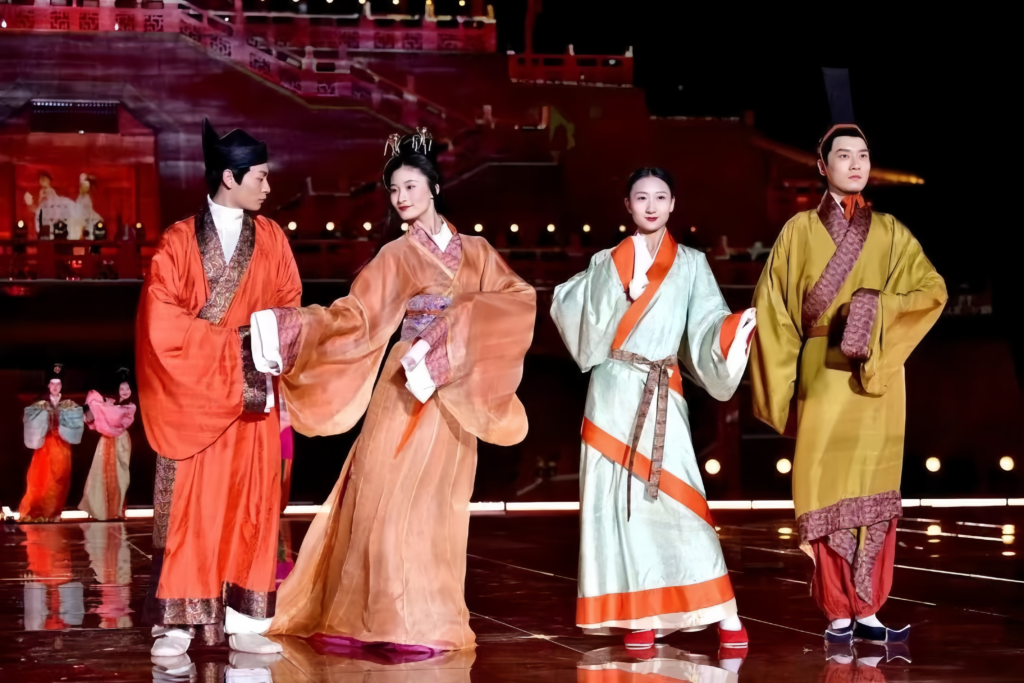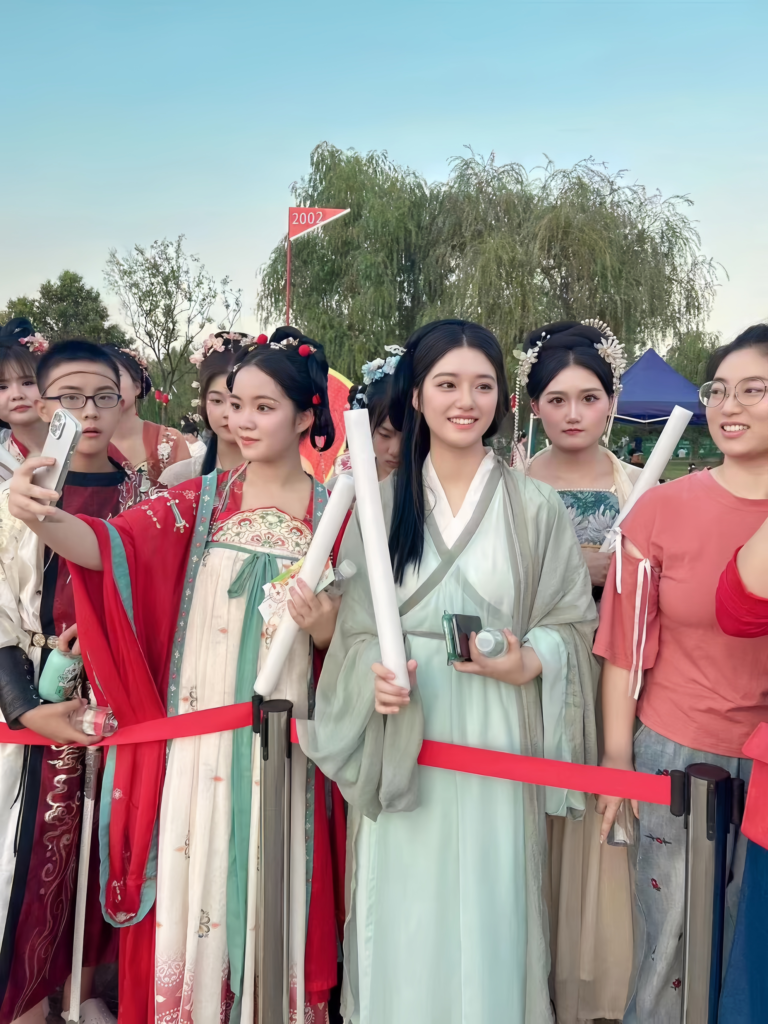Exploring the Fashion Code of Luoyang Hanfu: A Perfect Blend of Cultural Trend and Historical Legacy

The Rise of Luoyang Hanfu Cultural Trend
In the golden autumn, the streets and scenic spots of Luoyang, such as the ancient Luoyi City, Sui-Tang Luoyang City, Longmen Grottoes, Wangcheng Park, and the Sui-Tang City Ruins Botanical Garden, are often filled with groups of young people dressed in Hanfu. In this historically rich city, the Luoyang Hanfu cultural trend has become a stylish fashion, drawing the attention of many young individuals and forming a unique visual scene.

Hanfu is the traditional attire of the Han Chinese, characterized by its crossed collar and right-over-left overlap. Its design typically features a top garment paired with a lower garment. Throughout Chinese history, the styles of Hanfu have evolved, but the core features remain largely consistent. There are various types of Hanfu, each with its own distinct characteristics:
- Quju and Zhiju: These refer to the folds of the clothing, with “Quju” being a more curvaceous design traditionally favored for women’s clothing, embodying a reserved and graceful aesthetic. In contrast, “Zhiju” is a straight-cut design, more geometric in shape.
- Ruqun (Top and Skirt): This is a typical two-piece garment consisting of a short top (called “Ru”) and a long skirt (“Qun”). Depending on the waistline and collar design, Ruqun can vary, offering different styles for different occasions.
- Aoqun (Jacket and Skirt): The Aoqun features a top jacket worn over a skirt, and its style dates back to the Tang dynasty, continuing into the Ming period. The Ming dynasty is particularly known for its flourishing of this fashion.
- Beizi (Outer Garment): Beizi, originating from the Sui dynasty, was popular during the Song and Ming dynasties. It’s a straight-cut outer garment with slits on the sides, offering a flattering silhouette. Women’s Beizi emphasizes fluid lines, enhancing a graceful and gentle appearance.
- Round Collar Robe: This type of Hanfu has a narrow sleeve and a round collar. It features a stiffened collar with buttons at the neckline.
- Tie Li (Underlayer): The tie li refers to a garment worn under a robe, often with pleats that subtly flare out the lower hem of the robe, creating a poised and elegant visual effect.
In modern society, Hanfu has seen a revival, gradually becoming a unique element in the world of fashion. Designers are blending traditional and contemporary designs, creating a variety of Hanfu styles that help people rediscover the charm of Chinese cultural heritage.
Cultural Significance of Luoyang Hanfu
Luoyang, a city known for its rich cultural history, plays a pivotal role in shaping the distinctive design elements of its Hanfu. By incorporating local cultural and historical influences such as the peony flower and references from the ancient text “Yugong” (Tribute of Yu), Luoyang’s Hanfu designs are rich in regional flair. In recent years, the city’s Luoyang Hanfu cultural trend has become one of its most striking highlights, visible not only in tourist areas but also in everyday streets. In Luoyang, you can find an array of Hanfu, from formal ceremonial outfits to casual daily wear, each reflecting its unique aesthetic.

So, what makes the Luoyang Hanfu trend so enduring and popular? First and foremost, the city has successfully combined Hanfu with immersive cultural experiences. Visitors dressed in Hanfu can truly step into history through live performances and historical reenactments. Activities such as Hanfu fashion shows and experience events in public areas help attract more attention and encourage people to explore and enjoy the beauty of Hanfu firsthand. Respecting cultural significance is key when experiencing Hanfu in Luoyang.
Another factor in the sustained popularity of the Luoyang Hanfu cultural trend is the city’s commitment to cross-industry collaboration. By working with the tourism, food, handicraft, and performing arts sectors, Luoyang is continuously developing new ways for people to experience Hanfu culture, creating a vibrant cultural industry that blends various elements. This collaboration not only strengthens the Hanfu movement but also helps expand the city’s cultural influence.
Furthermore, the promotion and education of Luoyang Hanfu culture plays a key role. Luoyang has enhanced the study and communication of Hanfu culture across multiple sectors by organizing lectures, events, and activities. With the help of new media, self-media platforms, live streaming, and short videos, Luoyang’s Hanfu culture is reaching an ever-wider audience. The city is also bringing Luoyang’s unique Hanfu to international platforms, showcasing the charm of Chinese traditional culture globally.
Luoyang Hanfu blends characteristics from Tang, Song, and Ming dynasties; explore hanfu historical roots.
Blending Tradition and Modernity in Luoyang Hanfu
The rise of Luoyang Hanfu trend is a harmonious blend of tradition and modernity, as well as a revitalization of local culture. By exploring the cultural significance within Hanfu and seamlessly integrating the ancient with the contemporary, Luoyang offers a richer and more vibrant cultural experience. Whether it’s through a historical walk in Hanfu or a fashionable day out, Luoyang enables people to immerse themselves in the beauty of both the city and its cultural heritage.

In conclusion, the Luoyang Hanfu trend is more than just a passing fashion—it’s a cultural movement that bridges the gap between past and present. Through creative designs, immersive experiences, and broadening international exposure, Hanfu in Luoyang continues to captivate people from all walks of life.





Responses